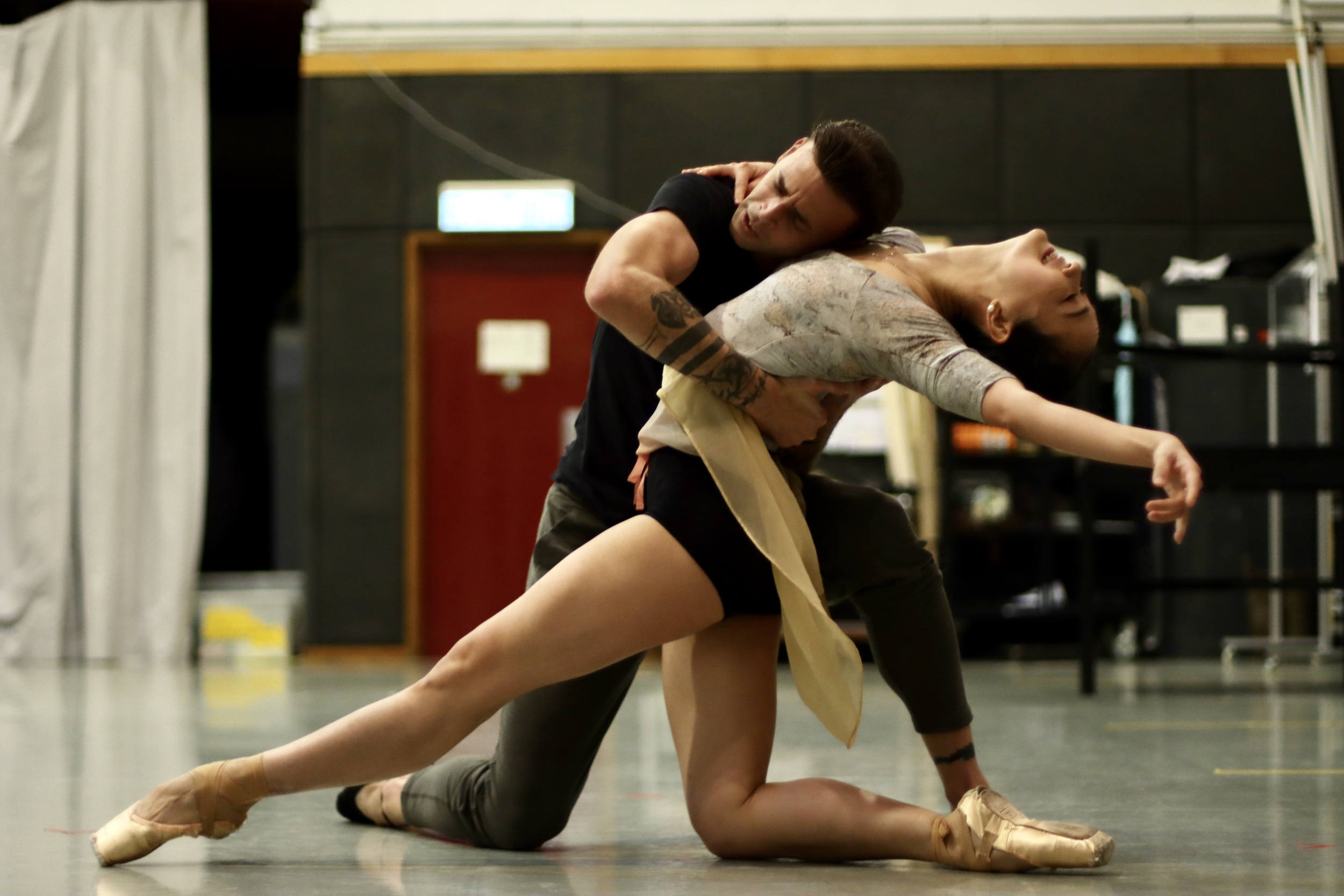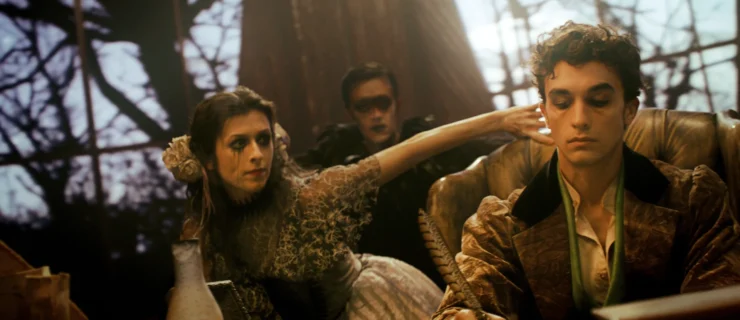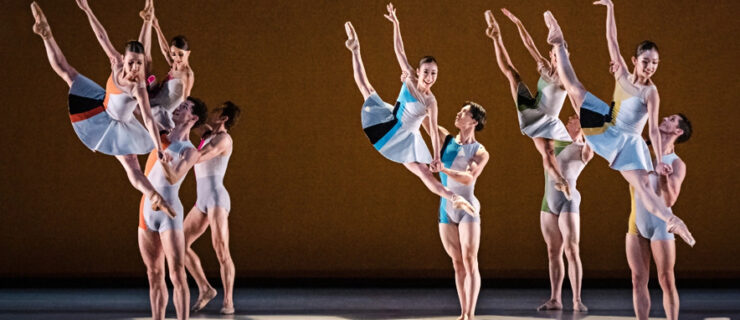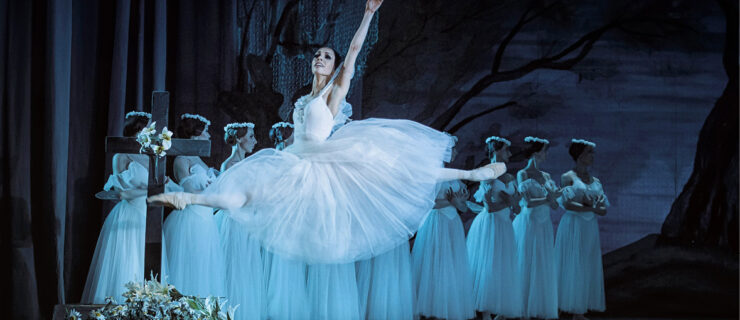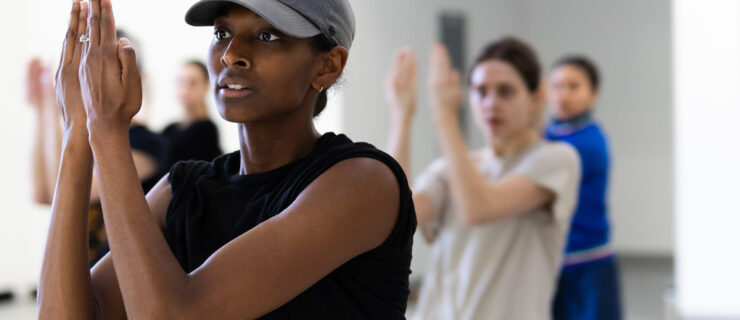Xuan Cheng, Splitting Her Season Between OBT and Hong Kong Ballet, on the Joys and Challenges of Multi-Tasking
Xuan Cheng’s resumé is an impressive list of competitions, companies and roles. But beyond her laudable accomplishments is a tenacious dancer whose curiosity to see the world shaped a 22-year performance career that is, apparently, far from over.
Cheng, born in Chenzhou, China, was only 10 when she moved away from home to enter the Guangzhou Ballet School. Upon graduation, she joined Guangzhou Ballet of China, becoming a principal dancer within just a few years. Her life there was very isolated and insulated—the rehearsal studios, company-provided housing and canteen were all within a self-contained campus, so she barely interacted with the outside world. But after winning medals at international ballet competitions, her eyes and mind opened to the opportunities outside her home country. It wasn’t easy, but the exposure she’d gotten from competitions helped land her spots in Canada’s La La La Human Steps and Les Grands Ballets Canadiens. In 2011, she joined Oregon Ballet Theatre as a principal dancer, where she’s still on the roster. But earlier this season, she made another shift: returning to Asia as a ballet mistress and principal dancer with Hong Kong Ballet.
The past few months have seen Cheng on several transcontinental flights between Hong Kong—where she’s rehearsing for the company’s U.S. tour of Romeo + Juliet at New York City Center January 13–14—and Portland, where she’s preparing for her final OBT performances in La Sylphide, in February. Pointe spoke with Cheng recently to find out how this next phase of her career is a continuation of her personal mission to be a bridge across cultures.
You’re doing so much these days! How are you coping?
It’s a lot. [Laughs.] But while it’s very challenging, I’m enjoying it. I feel I have to do it.
How did this big move come about? Did you have a previous relationship with HKB?
Yes. When I was a very young dancer with Guangzhou Ballet, HKB hired me and two other dancers to guest with them for their Nutcracker and Swan Lake. I was there for two months, and it opened my eyes to the fact that there is a whole other life beyond dance and what it’s like to be independent. Unlike Guangzhou Ballet, where you’re so isolated and your only social interactions are with other dancers, HKB is a very international company. You have to find your own housing, transportation, groceries, take care of yourself. It really opened up my mind and made me want to see the world.
Also, a ballet master from HKB frequently came to Guangzhou Ballet to teach, so they knew me and admired my work ethic. And as my career developed, they followed what I was doing, although we weren’t in touch. When the position opened up in Hong Kong, they thought I would be good for the job. I was flattered that they thought I was qualified, even though I didn’t feel ready to retire. But I remembered loving the company and having a great experience working with [HKB artistic director] Septime Webre when we performed his ALICE (in wonderland) at OBT. So I went to Hong Kong to teach and coach for a couple of weeks and felt at home right away. It felt like a natural fit; another piece in the puzzle.
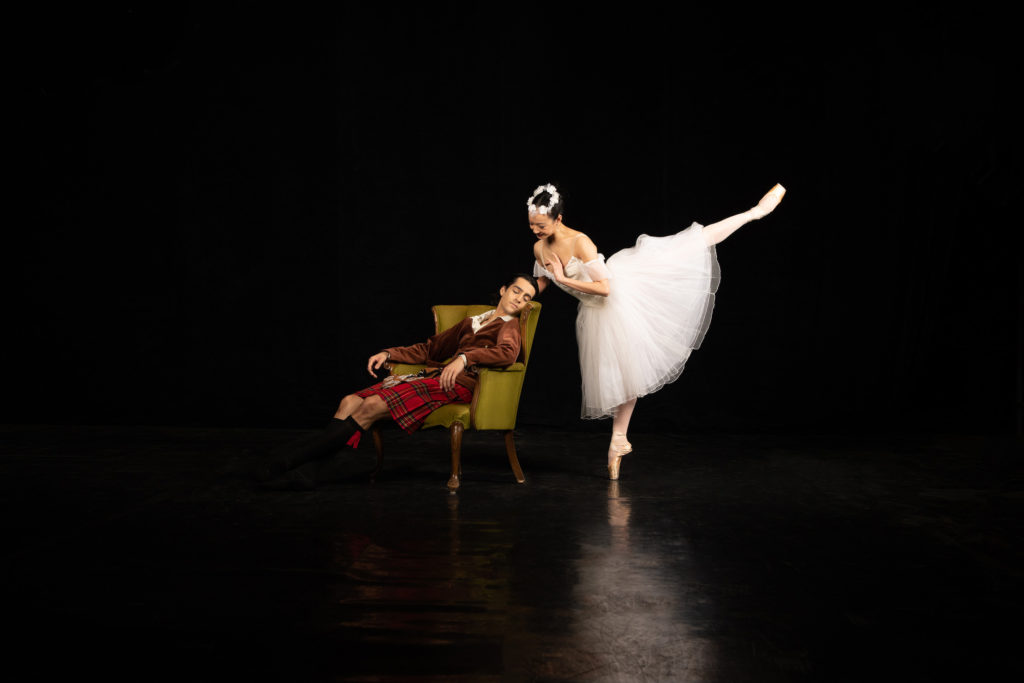
But you weren’t ready to retire—and you’re not retiring—so did you just tell them you’d only be a ballet master if you could dance, too?
When I went to Hong Kong to guest teach, I took class every day. Septime saw that I was not ready to stop, so he said, “How about I offer you both jobs: ballet mistress and principal dancer?” And I liked that because it seemed like a good transition. I’m not cutting everything off at once.
That sounds great, but also really hard. How do you balance your ballet mistress role with dancing?
Doing two jobs at once is very challenging. For example, when we did Carmina Burana last fall, I both danced in the ballet and rehearsed it. Ideally, I was supposed to dance during the first half of the day and run rehearsals in the second half, but it never quite worked out that way. But we have a great artistic team—two other ballet masters, plus Septime—so I get a lot of help from them.
The pace of the company is very fast. Rehearsals are condensed, so multiple things will be happening during one hour. For example, in Nutcracker there are four casts of Snow and Flowers, and each corps dancer has at least two spots.
But Septime is great about letting me focus on being a dancer. He knows it’s something one can only do for so long, and he wants me to do it while I still can. He knows I can be a ballet mistress more later. I appreciate that very much.
How do you like the ballet mistress job so far?
I love to be in front of the studio inspiring young dancers. It’s not the most glorious job, and now that I’m actually doing it, I really appreciate the ballet masters I’ve had. You need to keep things smooth and pull everything together.
Your husband, Ye Li, is still in Portland. It must be hard to be so far apart.
Both of us are keeping busy, so we won’t miss each other as much. Ye is running OBT2 as well as our school, the Oregon International Ballet Academy. We started it in 2015 to engage with the Chinese American community in Portland, and demand just kept growing. I love teaching kids, and having the school actually prepared me for doing multiple jobs at once.
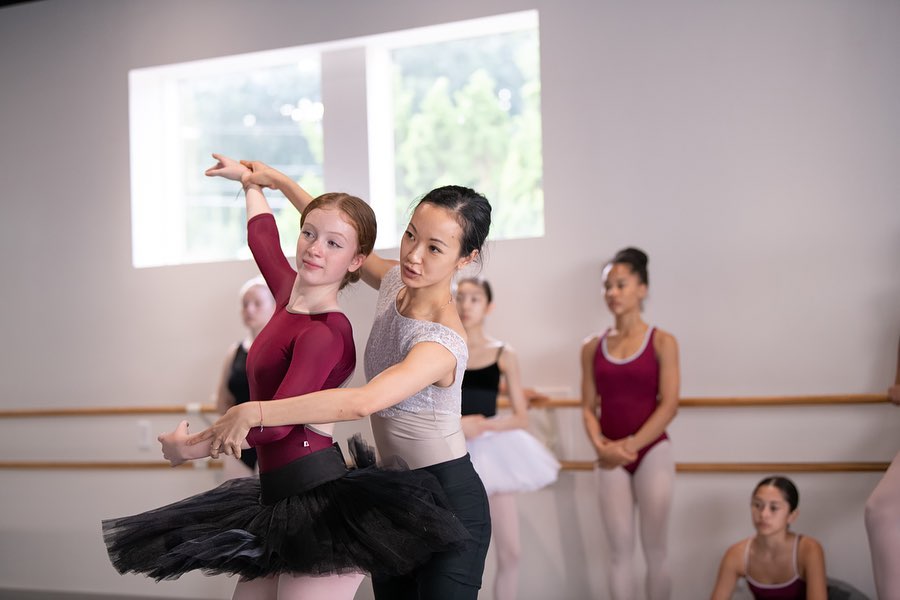
You’ll be touring to New York City this month with HKB in Septime Webre’s Romeo + Juliet. What’s that production like?
It’s set in Hong Kong in about 1960 and is very, very cool. The set features the iconic Hong Kong billboards and neon lights. There’s a mah-jongg scene, and for the fight scene, they brought in a kung fu master to work with the guys. The choreography is very hard stuff— definitely not MacMillan—and very complex, very physical. The audience will not be bored. A lot of things will be happening onstage all the time.
You’re also preparing for your OBT farewell in La Sylphide in February. Why is that ballet special to you?
La Sylphide was the first pas de deux I did with Ye. So it’s a little love token for us. I’ve always loved the Bournonville style—the acting, the mime, how you use your eyes. Working on La Sylphide and Napoli, which OBT did in 2018, has actually changed me as an artist. I believe in less is more and that not everything needs to be big, big, big. It all has to come from inside: What are you saying? What story are you telling? The répétiteurs, Frank Andersen and Eva Kloborg, are so dedicated to passing on these treasures. We spend so much time on every detail: where you look, how you hold your hand, the angle of your head. I feel these things are so important, especially now, when everything has to be so fast.
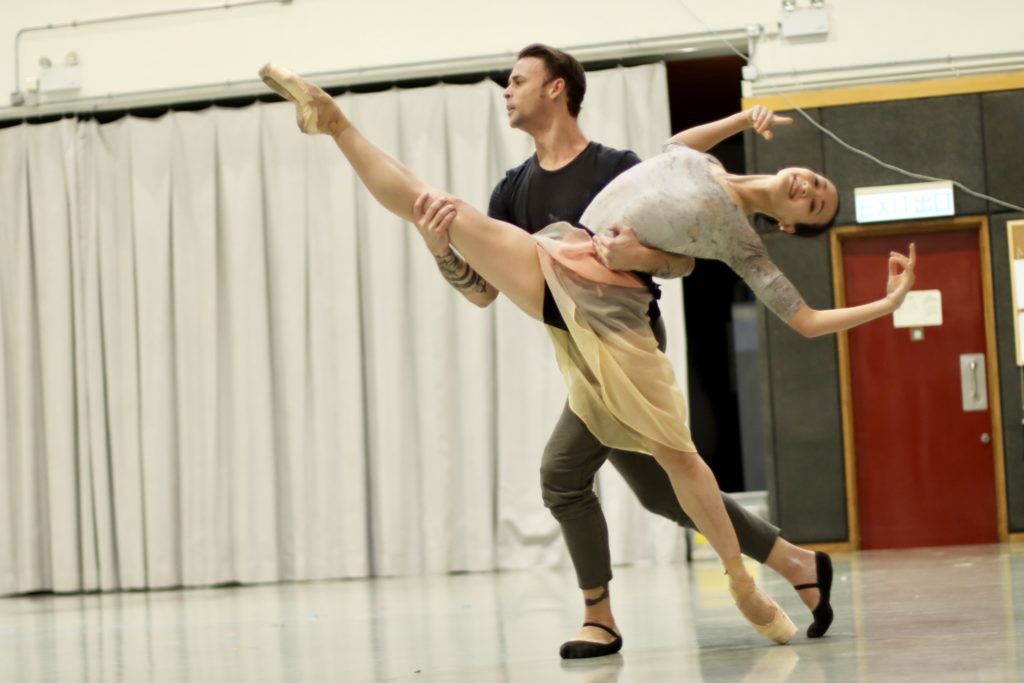
Do you have advice on handling so much work, responsibility and pressure?
What I’ve learned over the years is that I’m not perfect and don’t need to finish everything in one day. So long as I’m trying my best, as long as I don’t have any regrets, I’m fine. I think about something my father told me when I was very young, which I have been following my whole life: If you want to do something, just do it, go for it, follow your dream. The result and outcome don’t really matter. It’s always the journey and the process.
